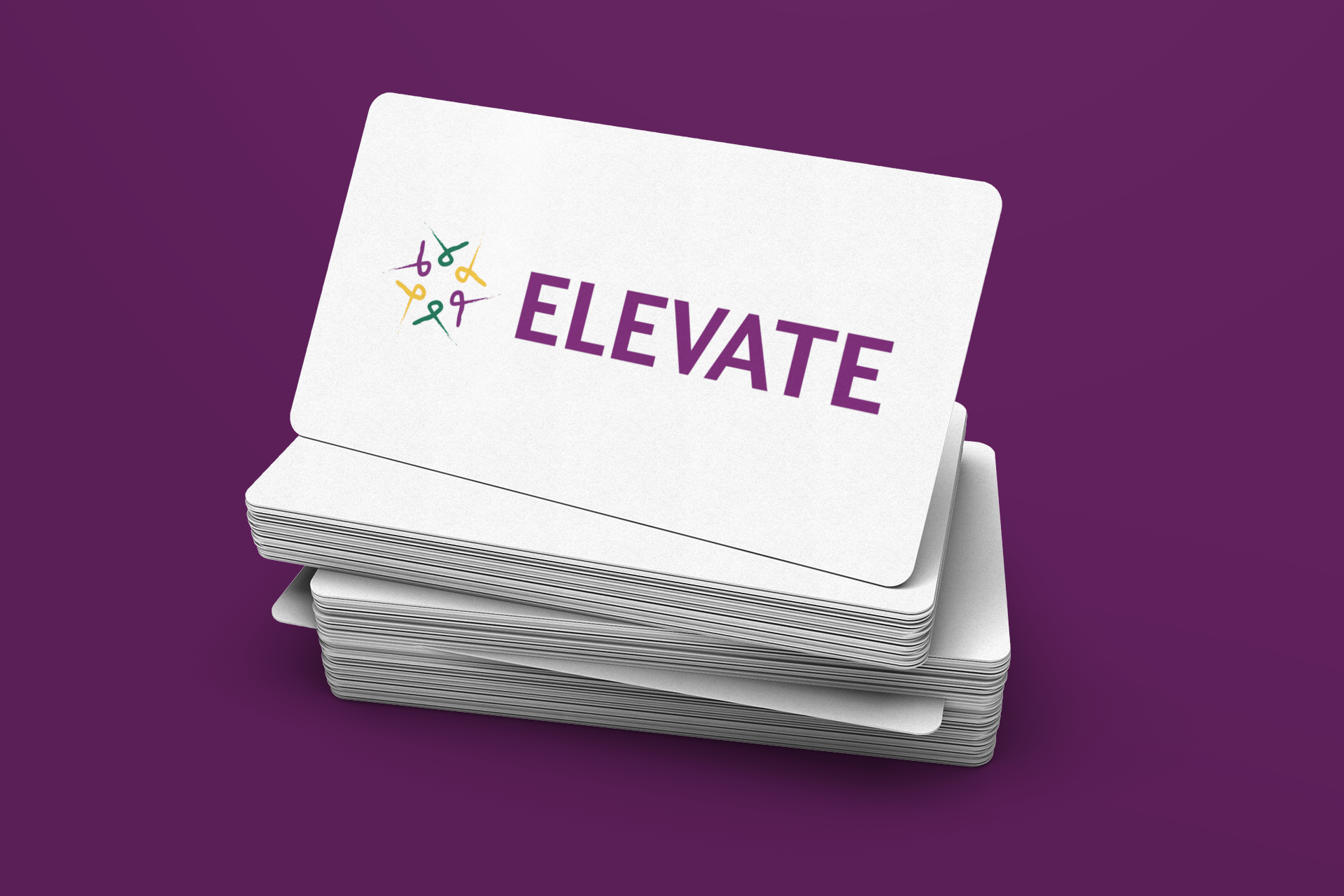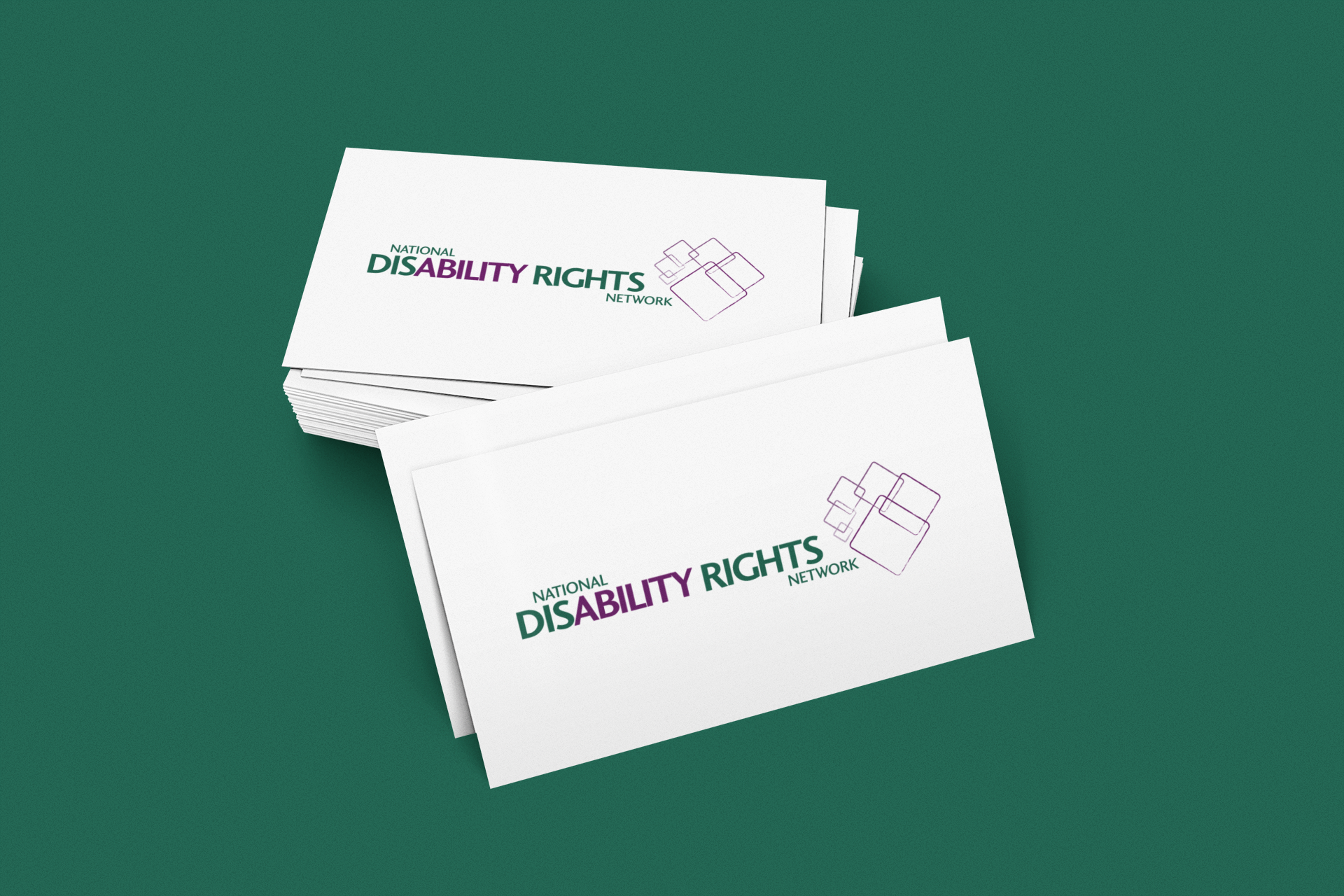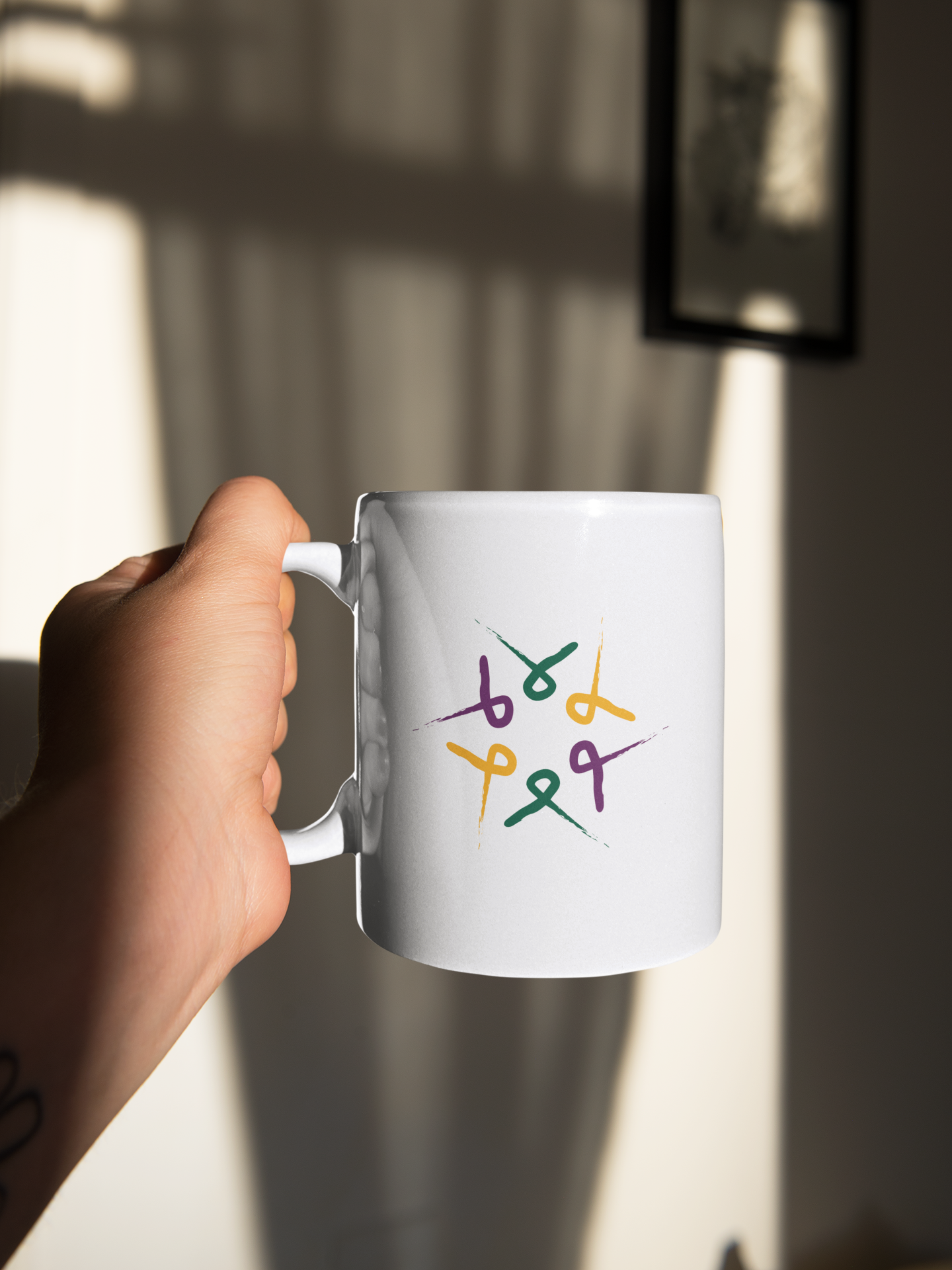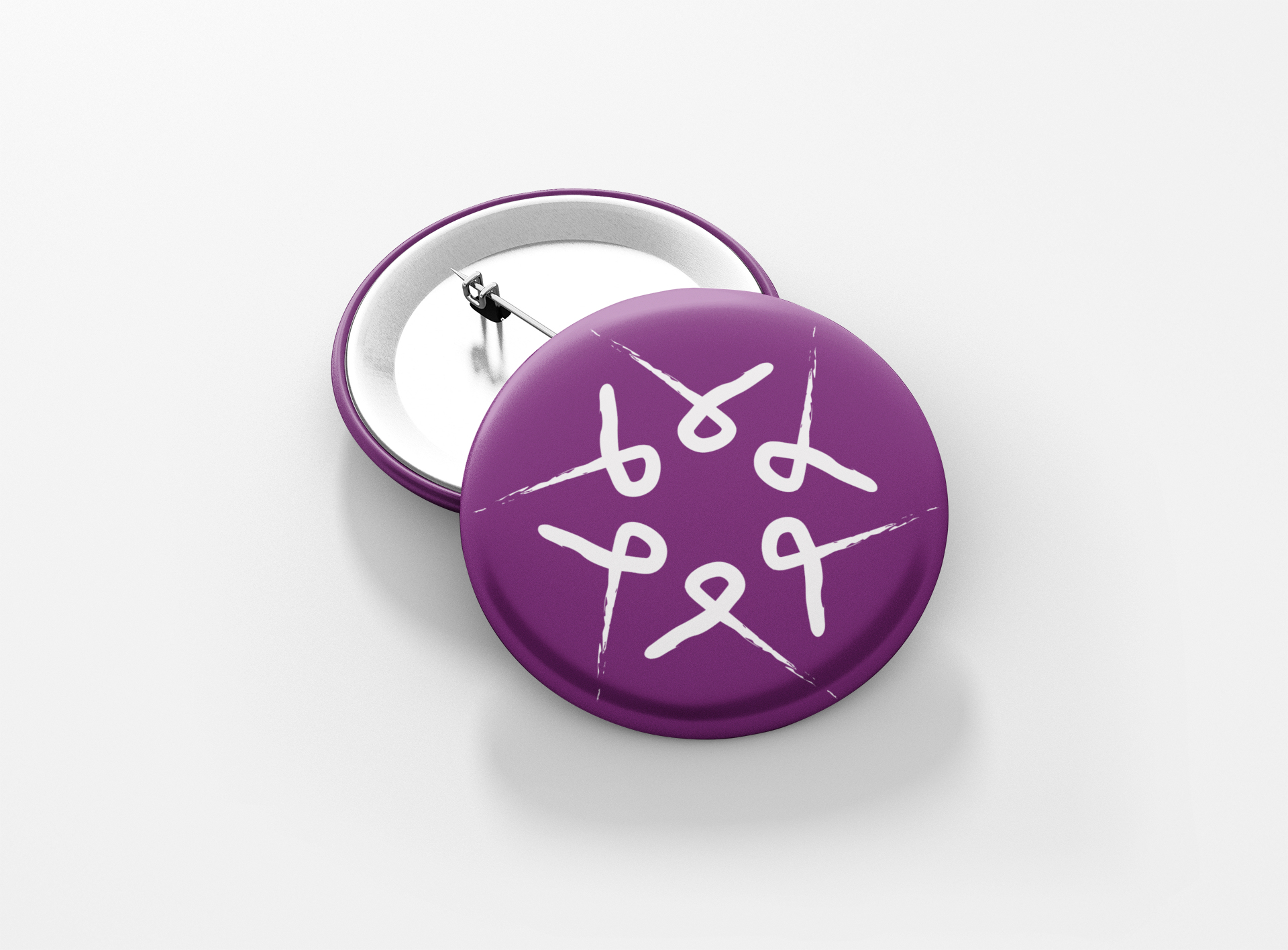Behind the Scenes: National Disability Rights Network
My work with the National Disability Rights Network holds a particular distinction for me: It was the first time I was referred and hired specifically as a disabled graphic designer. The blog post I wrote on disability representation in photography, and how I came to identify as a disabled person myself, led to this referral and new connection.
The task was to design a logo for the NDRN’s new learning management system (LMS): Elevate, which will provide training for Protection and Advocacy network members on subjects ranging from housing to employment to community integration.
Below is the final product. It feels active, exciting, and sparks curiosity about the Elevate LMS. The logo mark shows an abstract representation of different people coming together to form something new, in this case a star. The fonts, colors and hand drawn style also coordinate with the overarching logo and branding to the organization.
Big Takeaways from this project:
Simple Goes a Long Way
The primary audience for the Elevate LMS is the protection and advocacy organizations that are serving people with disabilities. The purpose of Elevate is meant to educate, inform, and inspire those people. There were a couple of layers to consider when creating the logo: First, we wanted to honor the work the P&A organizations do to empower people with disabilities. Second, we wanted to empower the organizations themselves to expand, rise, and elevate (see what I did there?) their capacities. That can be a lot for one little logo to carry.
Thankfully, my client was open to something simple and modern. A note in my design brief reads: “don’t want to put so much load on the logo that it will be impossible.” Music to my ears!
The best way to achieve this was with an abstract mark that allows for plenty of open interpretation and can represent the different aspects of the program. There are elements of community, growth, and excitement – open-ended concepts that get the right messages across without being too limiting.
There Isn’t a Central Icon to Represent Disability
This is something we talked about during the design process. Because we were representing people in the logo mark, we discussed whether the people should be depicted with specific disabilities or with a more general disability marker like a wheelchair.
The wheelchair icon in particular brings on a lot of discussion. On one hand, it is accepted as the longest standing symbol of disability. Many people recognize and acknowledge the wheelchair icon. They know what it means. On the other hand, the wheelchair icon does not represent the full spectrum of experiences within the disability community. Not all disabilities involve mobility aids or are even visual. (Like mine – how many times have I heard, “But you don’t look sick.”) For this reason, we decided against a specific visual marker indicate disability. It was important to the client – and to me – to avoid any misrepresentation of the complexity and diversity of the disability community. Instead, we determined that photographs on the LMS website would show various visual markers.
An Accessible Logo Needs Alt Text
This was the first time I was asked to write an alt text description for a logo I designed. It makes so much sense now that you would want a consistent way of describing a logo each time it appears. For this one, this is the alt text we developed:
Logo with the word Elevate in all caps, dark purple color and sans serif font. To the left of the text is an icon made of 6 human figures represented by looped lines which are arranged in a circle that forms the shape of a star in the negative space. The figures are in dark purple, dark green, and golden yellow colors.
A Note from the Client
“It was important to us to work with a designer with lived experience as a person with a disability. We were thrilled when we found Christy, and working with her was a pleasure. Before any design work began, she really took the time to understand what our organization is and does. She listened to our ideas and was patient with us as we worked through different concepts and opinions. This process ultimately resulted in designs that were exactly what we needed.”
–David Card, Deputy Executive Director for External Relations, National Disability Rights Network
EXPERIENCING DISABILITY DISCRIMINATION?
If you ever experience discrimination or a violation of your rights based on disability, you can seek help from your local protection and advocacy agency. You can find contact information for the agency in your state or territory here: https://www.ndrn.org/about/ndrn-member-agencies/






